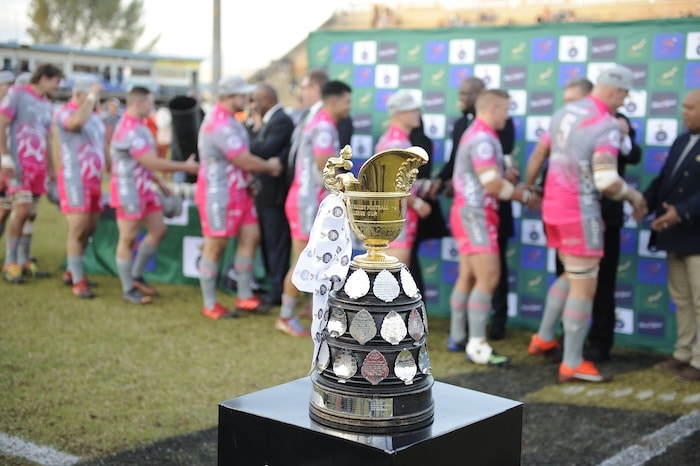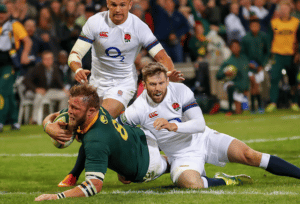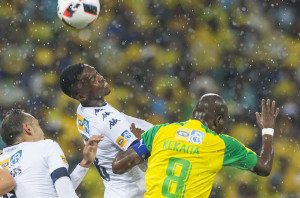Does the Currie Cup still have a place in South African rugby and what does the future look like? By Jon Cardinelli.
Fifteen years ago, the Currie Cup was still one of the most important tournaments in South African rugby.
Fans crammed into local stadiums to get a glimpse of their heroes. People around the world tuned in to watch the big clashes – and it did not get any bigger than a traditional north-south derby between the Blue Bulls and Western Province.
In the 2009 semi-final at Newlands, a crowd in excess of 50 000 witnessed one of the fiercest battles in the long history of the tournament. South Africa was a dominant force at that stage, with the Bulls winning the Super Rugby tournament, and the Springboks winning the series against the British & Irish Lions as well as the Tri Nations. After taking their country to the pinnacle of world rugby, the Boks returned to their respective provinces to play in the latter stages of the Currie Cup.
The starting line-ups of the Bulls and WP were stacked with internationals such as Fourie du Preez and Andries Bekker. Players of the quality of Danie Rossouw and Schalk Burger lined the benches. In the second half, the local crowd rose as one after Burger flattened Du Preez with one of the great tackles. The Bulls had the last laugh, however, when sharpshooter Morné Steyn slotted a late kick to win the match.
For more than a century, the level of competition was high and such moments of physicality, intensity and drama were commonplace. But as regional tournaments such as Super Rugby rose to prominence, the Currie Cup began to lose its lustre.
The Super Rugby tournament was expanded for a third time in 2011, with more teams and ultimately more games added to the schedule. Test coaches began to voice their concerns regarding the strain on top players at provincial level. Something had to give.
It was not long before top Boks were forced to miss the initial rounds of the Currie Cup, and eventually the entire tournament. As a result, the standard of the competition, and the level of interest, dropped off.
South African rugby’s pivot to the northern hemisphere in 2021 was another blow. The Bulls, Lions, Sharks and Stormers began to compete across elite tournaments such as the United Rugby Championship and the Champions Cup – travelling vast distances and playing between 22 and 29 games over the course of a club season. When there was a clash between those tournaments and the Currie Cup, the franchises were forced to field young and inexperienced teams in the local domestic competition. Unsurprisingly, none of these four teams won the Currie Cup in 2022 and 2023.
The Currie Cup has now been diluted to the point where it has become effectively a platform for the country’s next generation of players. Many in the South African rugby fraternity have lamented the decline of one of the world’s oldest and proudest tournaments and called for a dramatic revamp.
In late 2023, SA Rugby announced that the Currie Cup was set for another change aimed at boosting the level of competition and reigniting interest.
The 2024 tournament will be staged from July to September – effectively in the period where no URC or European Professional Club Rugby matches are played. This will provide locally based players who are not involved with the Boks in the July internationals or in the subsequent Rugby Championship with more game time as well as an opportunity to build momentum ahead of the next instalment of the URC, which traditionally begins in late September.
The qualification process for the Currie Cup Premier Division will change from 2025 onwards to provide more opportunities for all member unions to feature in the top tier. The Premier and First Division tournaments will be preceded by a local competition featuring every province bar the URC franchises.
This competition – which SA Rugby is calling the “SA Cup” at this stage – is scheduled to be played over a single round from March to June, with semifinals and a final determining the winner. Players will then enjoy a break before the Currie Cup starts.
From 2025, the top four teams from the “SA Cup” competition will join the four URC franchises in the Currie Cup Premier Division, with the remaining six teams contesting the First Division.
“I think it’s fair to say that the changes to the rugby calendar over the last few years have necessitated a change in approach to the Currie Cup, which we still consider to be the pinnacle of the local calendar,” said SA Rugby CEO Rian Oberholzer.
“We spent many hours consulting with all relevant stakeholders, our broadcast partner and possible sponsors, and the message was clear – we need the Currie Cup to have its own window in the calendar. We believe this change in the way we approach the Currie Cup will provide it with an opportunity to reclaim its rightful place at the jewel in the local rugby crown. To win the Currie Cup remains a massive achievement – ask any of the Cheetahs or Pumas players who have lifted the trophy in the last two years – and we have to ensure it’s as competitive as possible.
“By giving all the teams an opportunity to qualify for the Currie Cup Premier Division from 2025 onwards, we’ll also make it more appealing for sponsors at provincial level, especially as all their matches will be broadcast.”
This restructuring of the South African pyramid may well boost the game on a number of levels.
Player welfare is a burning issue at the highest level, with the Boks subject to a 12-month season, and thus a SA Rugby-sanctioned cap on appearances. That said, the provincial players with no international obligations are largely under-played. This new window and format may solve that problem.
The Currie Cup is no longer the most important local tournament in South Africa. In the absence of the Boks and other high-profile players who have their sights on the URC and Europe, it does not boast the same fierce intensity that captivated audiences for more than a century.
But as a platform for young players, and as a vehicle for less prominent provinces to progress and evolve, the Currie Cup may have a crucial role to play in the local game going forward.
As seen in the April issue of SportsClub Magazine.
Photo by Charle Lombard/BackpagePix





